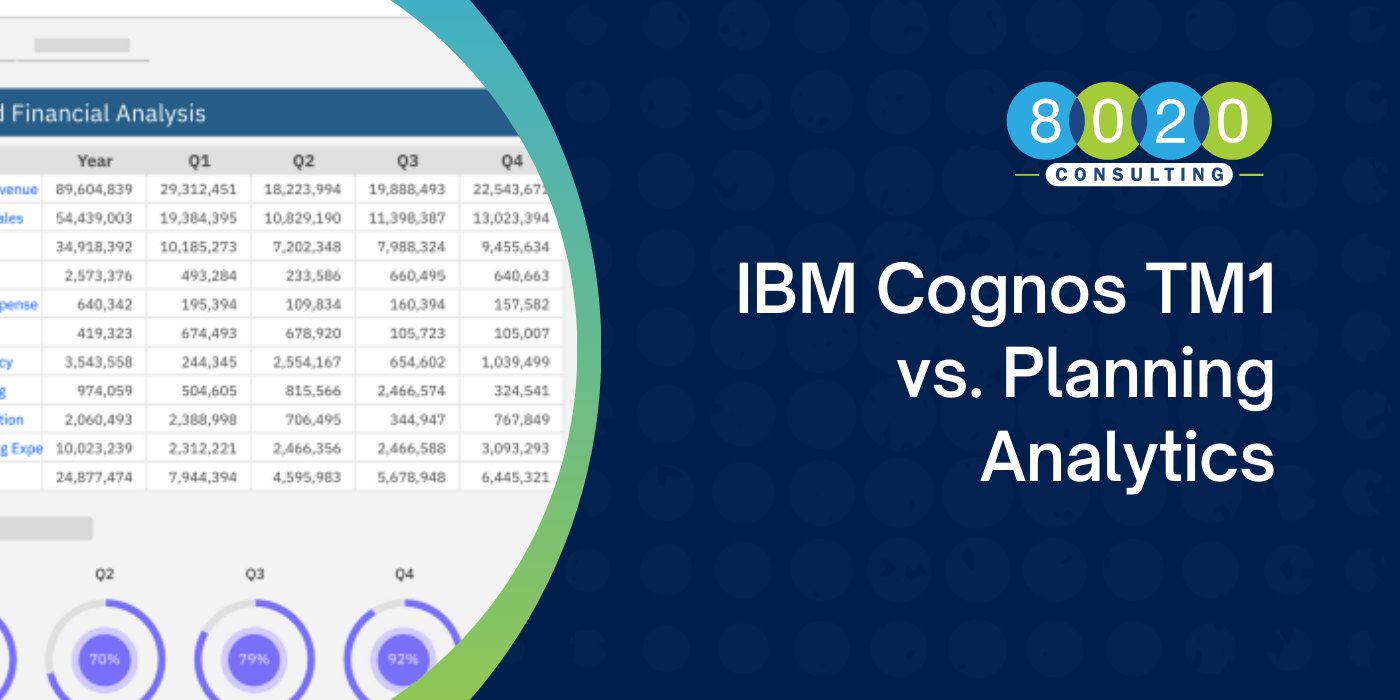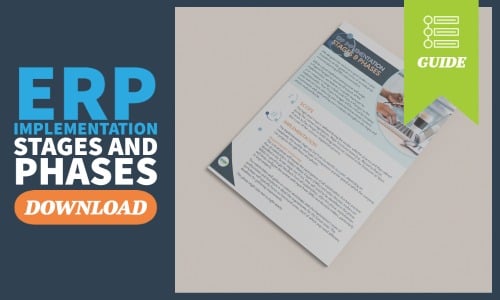IBM Cognos TM1 vs. Planning Analytics: Feature Comparison & Business Performance Management Software Guide
- Updated on December 17, 2024
- Kieran Chatulani
- Approx. Read Time: 5 minutes read
- Published on November 9, 2022


The transition from IBM Cognos TM1 to Planning Analytics (PA) has been a significant shift for organizations leveraging business performance management software. While much of the core functionality remains familiar, the introduction of new features, improved tools, and enhanced performance has created opportunities for greater efficiency and flexibility. In this retrospective, we reflect on the changes, address some myths, and share insights into the lived experience of adopting Planning Analytics.
|
Key Takeaways
|
TM1 users will be relieved to know that the foundational components of TM1—TM1 Server, Perspectives, and TM1 Web—continue to exist in Planning Analytics. At its core, Planning Analytics builds on the strengths of TM1 while introducing modernized tools and features that expand its capabilities. For many, the initial perception was that the transition would be overly complex, but this has proven to be less daunting in practice.
The driving force behind the upgrade lies in the enhancements IBM has introduced, particularly on the server side with the inclusion of REST APIs.
| Feature | TM1 (Pre-PA) | IBM Planning Analytics |
|---|---|---|
| Interface | Perspectives and TM1 Web | Planning Analytics Workspace (PAW) |
| Reporting | DBRW formulas, manual refreshing | Quick Reports, formula-free sharing |
| Excel Integration | Limited WAN performance | Optimized WAN with PAX/PAfE |
| Hierarchy Management | Static, single hierarchies | Attribute-based, dynamic hierarchies |
| Rules and Feeders | Complex rules with manual feeders | Feeder-less rules, simplified engine |
| API Support | Limited API interaction | REST API, automation capabilities |
| Visualization Tools | None | PAW dashboards, drag-and-drop tools |
| Collaboration | Static reporting | Comment functionality, easy sharing |
REST APIs have fundamentally improved the interaction between Planning Analytics and external tools like Microsoft Excel. These APIs allow for seamless, secure data transfers and automated scheduling of processes, creating significant time savings and improved efficiency for users.
PAX, also known as PAfE, represents a leap forward from TM1 Perspectives. While retaining much of the familiar Excel-based reporting, PAX introduces notable improvements:
Optimized Performance: PAX eliminates the need for tools like Citrix, optimizing performance over wide area networks (WAN).
Formula-Free Reports: Quick Reports do not rely on DBRW formulas, resolving common frustrations with formula-related connectivity issues.
Enhanced Usability: Dropdown lists for dimensions, comment functionality, and the Snapshot feature allow for smoother, more user-friendly reporting.
PAW is one of the most transformative additions. As a web-based interface, PAW allows users to create dynamic dashboards and visualizations using intuitive drag-and-drop tools. This has made it easier for business users and analysts to interact with TM1 data, collaborate, and share insights.
The introduction of attribute-based hierarchies allows for alternate, dynamic hierarchies without creating additional dimensions. This innovation reduces cube size, enhances performance, and simplifies analysis. Organizations have seen a noticeable improvement in data management efficiency as a result.
Pre-PA versions of TM1 required feeders to optimize rule calculations, adding layers of complexity. Planning Analytics introduces a feeder-less calculation engine, simplifying the creation and maintenance of rules while improving performance across large datasets.
The transition from TM1 to Planning Analytics has proven to be more straightforward than anticipated, with the benefits quickly outweighing any challenges. Below, we share a few key reflections from our experience with the upgrade.
One of the standout changes has been the move to PAX for reporting. The elimination of DBRW formulas has significantly reduced troubleshooting time and improved collaboration. Quick Reports and Snapshots enable teams to create and share reports seamlessly, saving hours previously spent on formula-related issues.
For example, teams that previously faced challenges in refreshing and distributing Excel files now leverage Quick Reports to refresh data with a single click, ensuring accuracy and consistency across stakeholders.
Attribute-based hierarchies have revolutionized how organizations manage their dimensions. By leveraging attributes to create alternate hierarchies, users no longer need to build redundant dimensions. This has streamlined analysis, reduced memory usage, and enhanced cube performance.
For instance, a retail client using product categories to analyze sales can now dynamically view the same data organized by product attributes, such as brand or region, without adding complexity to their model.
The web-based PAW interface has transformed how users interact with TM1 data. The intuitive dashboarding and visualization tools enable teams to analyze and present data more effectively. New users have found PAW more approachable, while experienced developers appreciate the speed and flexibility it provides for content creation.
A finance team, for instance, leveraged PAW to build interactive dashboards that provided real-time visibility into KPIs, enabling faster decision-making and improved stakeholder communication.
The introduction of feeder-less rules has been a game-changer for teams managing complex calculations. By removing the need for feeders, Planning Analytics reduces rule complexity and improves performance, particularly for large datasets.
One organization reported that a set of rules that previously required hours of debugging was implemented in a fraction of the time, enabling their team to focus on analysis rather than troubleshooting.
The transition from IBM Cognos TM1 to Planning Analytics represents more than just a name change—it’s an opportunity to modernize and improve business performance management processes. By addressing long-standing limitations with tools like PAX, PAW, and attribute-based hierarchies, Planning Analytics delivers greater flexibility, efficiency, and usability.
For organizations still using TM1, the upgrade path is well worth exploring. The improved reporting, simplified rule development, and enhanced visualization tools make a compelling case for adopting Planning Analytics.
At 8020 Consulting, we specialize in helping organizations navigate the transition from TM1 to Planning Analytics. Our team of experienced consultants can guide your upgrade, ensuring a smooth transition and helping you unlock the full potential of Planning Analytics.
Book a meeting today to discuss your business performance management needs and explore how we can support your goals. If you’d like to learn more about the process of ERP implementations, you can also download our free guide:

Organizations increasingly use audit management systems (AMS) to ...
Read MoreAuditing plays a vital role in ensuring compliance, managing risk, ...
Read MoreManaging compliance and security is increasingly complex, especially ...
Read More